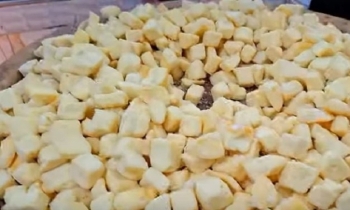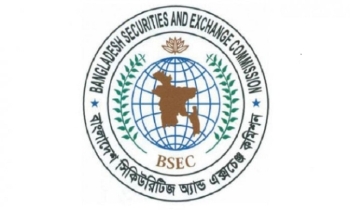WTO note finds global trade resilient following one year of war in Ukraine
BI Report || BusinessInsider

Photo: Collected
A new World Trade Organisation (WTO) information note released on Thursday reported that global trade remained resilient and performed better than pessimistic predictions for 2022 as economies greatly affected by the war in Ukraine found alternative sources of supply.
For the longer-term outlook, new WTO simulations show the importance of strengthening the multilateral trading system, with least-developed countries likely to be hardest hit if international cooperation were to break down.
The note titled "One year of war in Ukraine: Assessing the impact on global trade and development" estimates that trade growth in 2022 was above the WTO trade forecast of 3 percent issued in April and substantially higher than its estimates for more pessimistic scenarios for the year.
The stability of global trade was also evident in global supply chains, confirmed by the 4% year-on-year growth of trade in intermediate goods in the second quarter of 2022.
"Global trade has held up well in the face of the war in Ukraine. Despite the devastation we have seen one year on, trade flows remained open. We have not seen the worst predictions foreseen at the onset of the war.
Sharply higher food prices and supply shortages have not materialized thanks to the openness of the multilateral trading system and the cooperation governments have committed to at the WTO," Chief Economist Ralph Ossa said.
"Resilience will ultimately be best served by fostering deeper and more diverse international markets, anchored in open and predictable trade rules," he said.
Furthermore, trade in products was significantly affected by the war and trade by the most exposed countries was remarkably resilient.
Trading partners found alternative sources to fill in the gaps for most products affected by the conflict, such as wheat, maize, sunflower products, fertilizer, fuels and palladium — a rare earth mineral used in catalytic converters for cars.
Prices for goods greatly affected by the war rose less than expected at the beginning of the war.
Among products most affected by the war, prices increased between 4.4 percent (palladium) and 24.2 percent (maize). While these price increases are substantial, they are significantly lower than the gloomiest predictions.
WTO Secretariat staff simulations highlighted that in the case of cascading export restrictions on food, prices for wheat could have increased by up to 85 percent in some low-income regions compared to the actual increase of 17 percent.
The note further finds that Ukrainian exports collapsed by 30 percent in 2022 in value terms.
Exports of cereal, which are central to the food security of many African economies, declined by 14.9 percent forcing these economies to adjust their sourcing patterns.
Ethiopia, for example, which used to rely on Ukraine and Russia for 45 percent of its wheat imports, reacted by increasing purchases from other producers including the United States (shipments up 20 percent in volume terms) and Argentina, which supplied 21 percent of Ethiopia's imported wheat, up from zero in the previous year.
Russia's exports expanded by 15.6 percent in value terms because of an increase in prices particularly for fuels, fertilisers and cereals.
However, estimates suggest Russia's export volume may have declined slightly. Trade flows are sharply down for industrial goods such as motor vehicles, pharmaceuticals or aircraft, where sanctions are more restrictive.
Updating the long-run scenario described in the previous report of a decoupling of the global economy into two rival blocs, the latest note provides new simulations of the opportunity cost of foregoing further multilateral liberalization and instead moving to geopolitical rivalry.
The opportunity cost would be about 8.7 percent of real income at the global level, varying between 6.4 percent for developed countries, 10.1 percent for developing countries and more than 11.3 percent for least-developed countries.
The relative restraint in the imposition of export restrictions by WTO members may have played a key role in keeping price increases in check.
During the period from mid-October 2021 to mid-October 2022 covered by the latest WTO Monitoring Report, estimated trade coverage of the regular (non-COVID-19-related) import-facilitating measures introduced by WTO members (USD 1,038.4 billion) far exceeded the trade coverage of import-restrictive measures (USD 163.5 billion).
This, in combination with the limited price hikes, suggests that the 12th WTO Ministerial Conference, which resulted in a Ministerial Declaration on the Emergency Response to Food Insecurity, had a meaningful impact on reducing food insecurity.
























